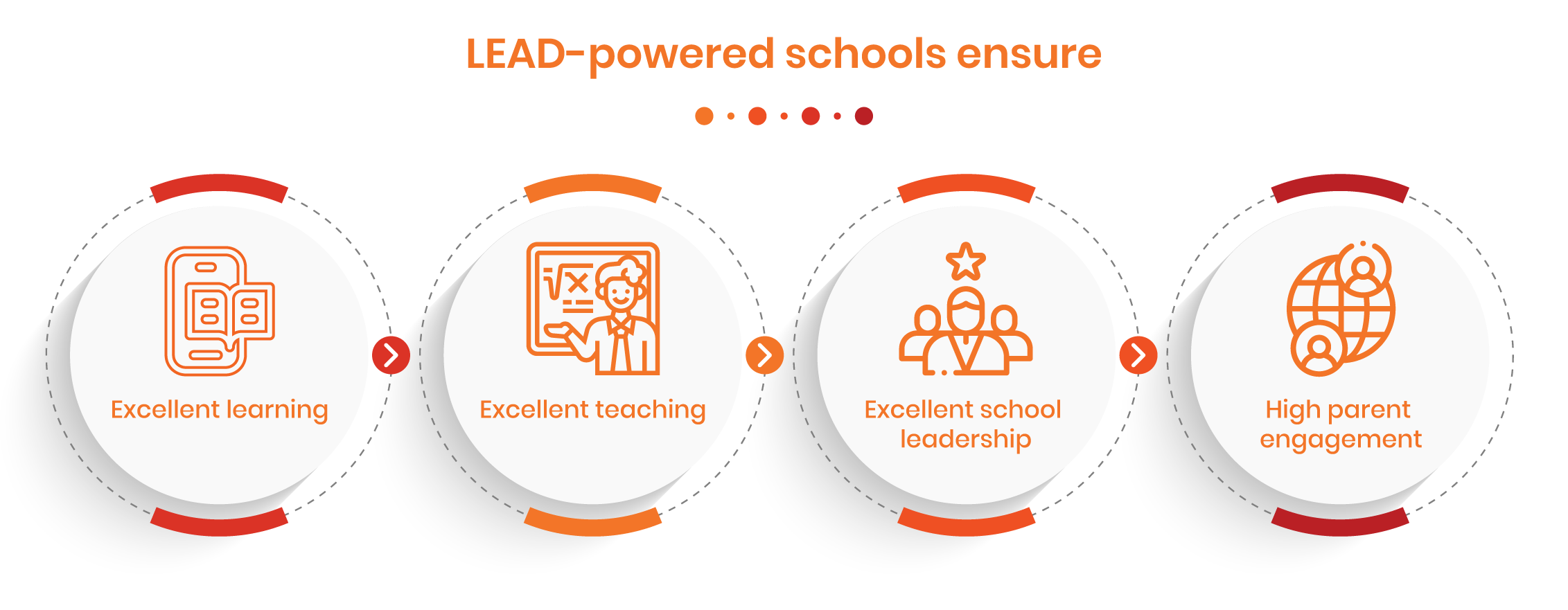What is Smart Classroom? Definition, concept & Features
.png)
Give Your School The Lead Advantage
According to the estimates released by RBSA Advisors, India’s EdTech industry is set to become $30 billion in size in the next ten years. This means the coming times will rely heavily on technology, and systems that fail to comply with this fast-changing world will perish.
The pandemic exposed flaws in the education system, highlighting the need for a robust model. Smart classrooms promote active learning, resilience, stress tolerance, and flexibility, facilitating a crucial hybrid learning model during disruptions. India’s education system has long relied on rote learning, which fails to prepare students for future skills. LinkedIn reports that 85% of jobs in 2030 haven’t been invented yet, necessitating a model beyond traditional learning.
According to Weforum, half of us will need to re-skill in the next five years due to the economic impacts of the pandemic and increasing automation.
Definition of Smart Classroom & Its Key Components
A smart classroom is an EdTech-upgraded classroom that enhances the teaching and learning process for both teachers and students by integrating audio, video, animations, images, multimedia, etc. This increases engagement and leads to better student performance. Smart classroom technology has proven effective, especially when students struggle to concentrate in an online setup.
Difference Between a Smart Classroom and a Normal Classroom
- A traditional classroom relies on conventional teaching methods, while a smart classroom incorporates technology to enhance the learning experience.
- Smart classrooms offer interactive tools, personalized learning, and abundant resources, providing a more engaging and effective educational environment.
Objectives and Importance of Smart Classroom Technology
Smart classrooms allow teachers to adapt their teaching styles to meet the diverse needs of their students. With interactive EdTech tools, teachers can support each child’s individual learning plan, making learning more engaging and effective. Modern classrooms equipped with technology cater to various learning preferences, ensuring every student’s needs are met.
Here are the main objectives of a smart classroom:
- Create an active learning environment.
- Encourage student participation in experiential activities.
- Build a beneficial learning environment for each student.
- Ensure students are attentive during lessons.
- Support teachers in creating dynamic learning experiences.
Different Types & Features of Smart Classroom
- Standard Smart Classroom
A teacher-led learning space with essential technology such as a computer, interactive whiteboard, and projector.
- Intermediate Smart Classroom
Includes all features of a standard smart classroom, plus additional devices like digital podiums and laptops, fostering a mix of teacher-led and independent learning.
- Student-led Smart Classroom
A fully integrated classroom where each student has personal devices, including virtual reality headsets, tablets, and laptops, promoting individual engagement with content.
Advantages of Smart Classrooms
- Enhanced Teacher-Student Interaction
Automated tasks allow teachers to focus more on teaching and interacting with students.
- Time-Saving Efficiency
Digital tools streamline teaching tasks, allowing more time for individual student needs.
- Cost-Efficiency
Smart classrooms reduce the need for repeat purchases of teaching materials, saving costs over time.
- Enhanced Student Engagement
Smart classrooms use projectors and interactive whiteboards to display images, videos, and animations, making lessons more captivating.
- Improved Student Performance
Personalized learning through smart classrooms helps students understand and retain concepts better.
- Access to Abundant Educational Resources
Students have access to a vast library of multimedia resources, supplementing classroom learning.
Preparing Students for Future Challenges
Smart classrooms support the future vision where students are trained in active learning, resilience, stress tolerance, and flexibility. Smart class technology allows students to develop skills that otherwise remain amiss in a traditional setup.
Critical thinking and problem-solving are usually the skills at the top of any employer list, and smart class technology helps to hone these skills via collaborative learning. Also, smart classes let students learn at their own pace with the help of ample resources, which makes them self reliant. Smart class technology also facilitates a hybrid learning model, crucial in the current times of disruption.

How LEAD is Transforming Schools with Smart Classroom Technology
LEAD is transforming Indian schools by integrating advanced EdTech solutions. Teachers at LEAD-powered schools use teacher tablets loaded with lesson plans, audiovisual resources, and training materials. LEAD’s Excellence Managers guide and coach teachers throughout the year. The LEAD Parent & Student app keeps parents updated on their child’s performance and also lets them see their child’s homework, attendance, assessment, unit progress, and class pictures.
LEAD is transforming schools by making children future-ready. To make yours a LEAD Powered School, Partner with us today!

.png)
.png)
.png)
.png)
